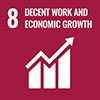coordinated by Pilar Ficapal-CusíISSUE 8 (NOV 2017)
Flexicurity or the paradigm of welfare to workfare in the current Spanish post-recession period
The Spanish economy is more productive but employment rates have not returned to levels prior to the recession. Therefore, the main challenge is reducing unemployment and temporary employment, creating quality, stable and productive jobs that help reduce inequality, as well as resuming the path of convergence with more advanced economies. The model of flexicurity is defined as a strategy to modernize the labour market through two paths that converge: flexibility (for both business and workers, to respond to the needs of both) and safety (for workers who must be able to develop their careers, expand their skills and receive support from social security systems during periods of inactivity). However, this model of Danish flexicurity cannot be implemented directly to each Member State or region of the European Union, but rather it must be adapted to each context with an adequate combination of instruments that respond in our region to the debate between different social and political sensitivities. The goal is not increasing precariousness through flexibility, but rather flexible specialization.
ODS



 Purificación Baldoví
Purificación BaldovíAn economist qualified at the Universitat de Valencia, with a Bachelor Degree in Work Sciences from the UOC and Masters in HR (ESIC), Innovation (UV) and Management Boards (UEV). She is currently working on her PhD in Innovation (UV). She is a spokeswoman for the Economic and Social Committee of the Valencian Community. She currently runs workshops and provides consultancy services in business, educational and association innovation processes in relation to leadership, negotiation, motivation and team management. She also writes pedagogical content and is a guest lecturer at the UOC. Within the last 10 years, she has been the director of the Valencian Association of Innovative Companies at the Universitat Politècnica de Valencia and the Globalis Foundation, which focuses on social innovation within the framework of the Innpulso national network.



